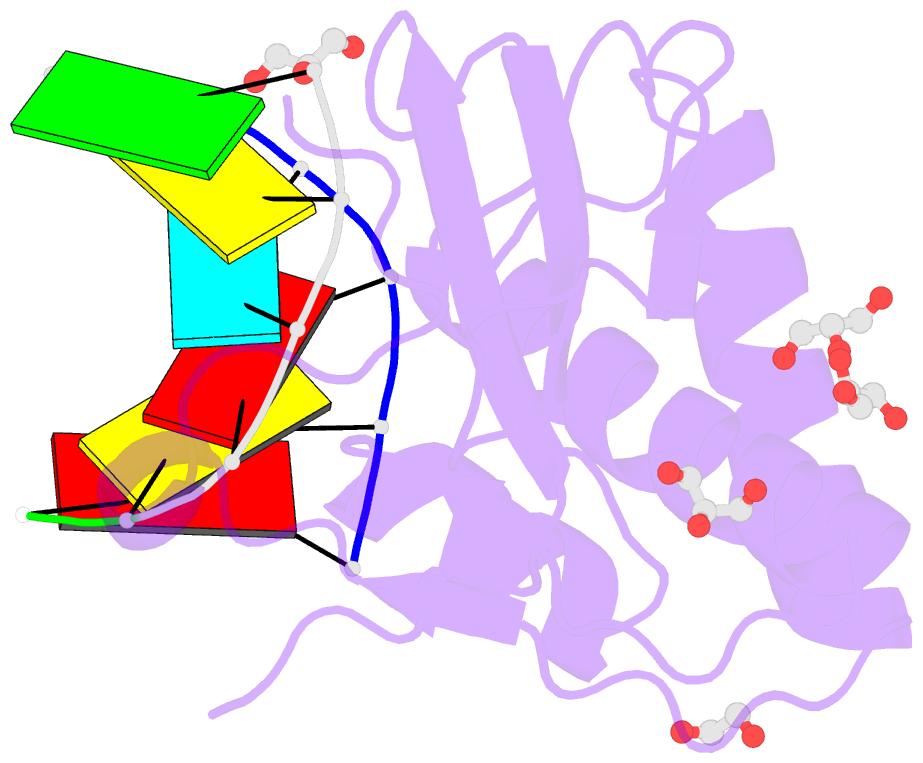Summary information and primary citation
- PDB-id
- 6dp2; DSSR-derived features in text and JSON formats
- Class
- hydrolase-DNA-RNA
- Method
- X-ray (1.662 Å)
- Summary
- Crystal structure of bacillus halodurans ribonuclease h1 in complex with an RNA-DNA hybrid: reaction in 7.5 mm mg2+ and 75 mm k+ for 40 s at 21 c
- Reference
- Samara NL, Yang W (2018): "Cation trafficking propels RNA hydrolysis." Nat. Struct. Mol. Biol., 25, 715-721. doi: 10.1038/s41594-018-0099-4.
- Abstract
- Catalysis by members of the RNase H superfamily of enzymes is generally believed to require only two Mg2+ ions that are coordinated by active-site carboxylates. By examining the catalytic process of Bacillus halodurans RNase H1 in crystallo, however, we found that the two canonical Mg2+ ions and an additional K+ failed to align the nucleophilic water for RNA cleavage. Substrate alignment and product formation required a second K+ and a third Mg2+, which replaced the first K+ and departed immediately after cleavage. A third transient Mg2+ has also been observed for DNA synthesis, but in that case it coordinates the leaving group instead of the nucleophile as in the case of the RNase H1 hydrolysis reaction. These transient cations have no contact with the enzymes. Other DNA and RNA enzymes that catalyze consecutive cleavage and strand-transfer reactions in a single active site may similarly require cation trafficking coordinated by the substrate.





